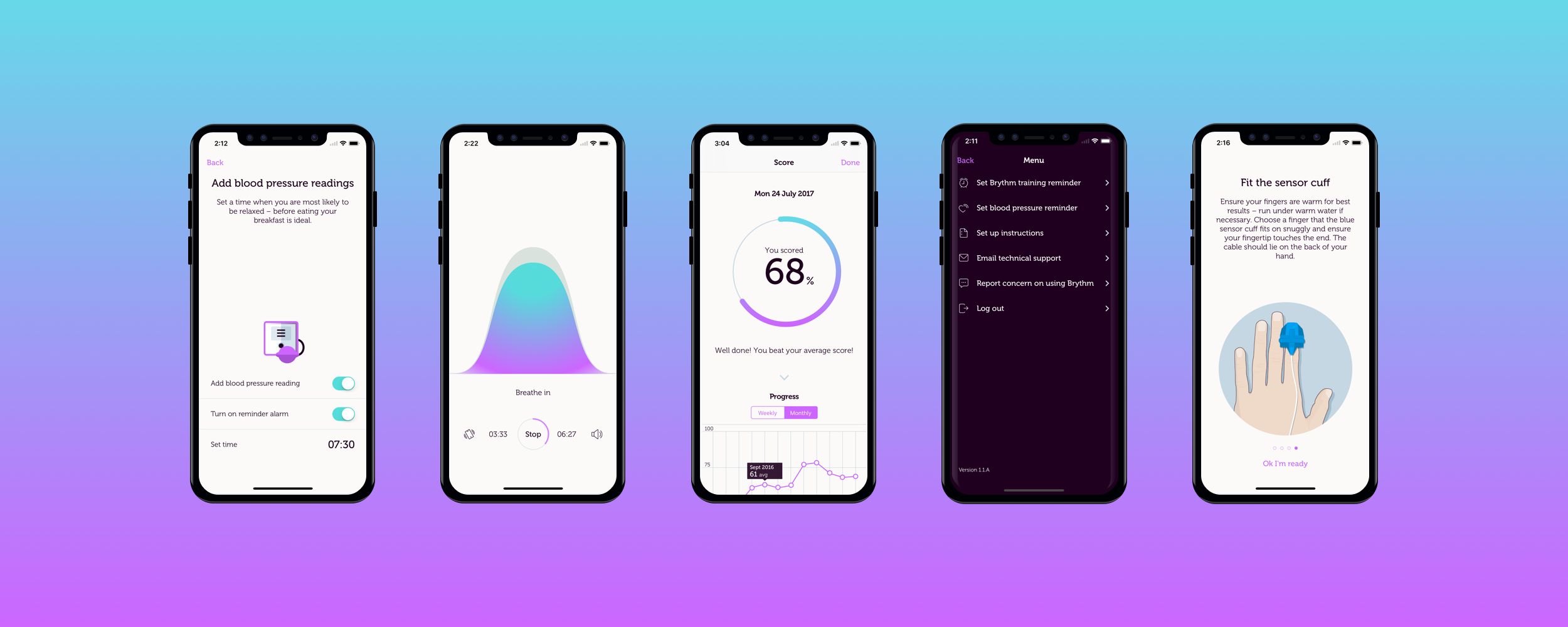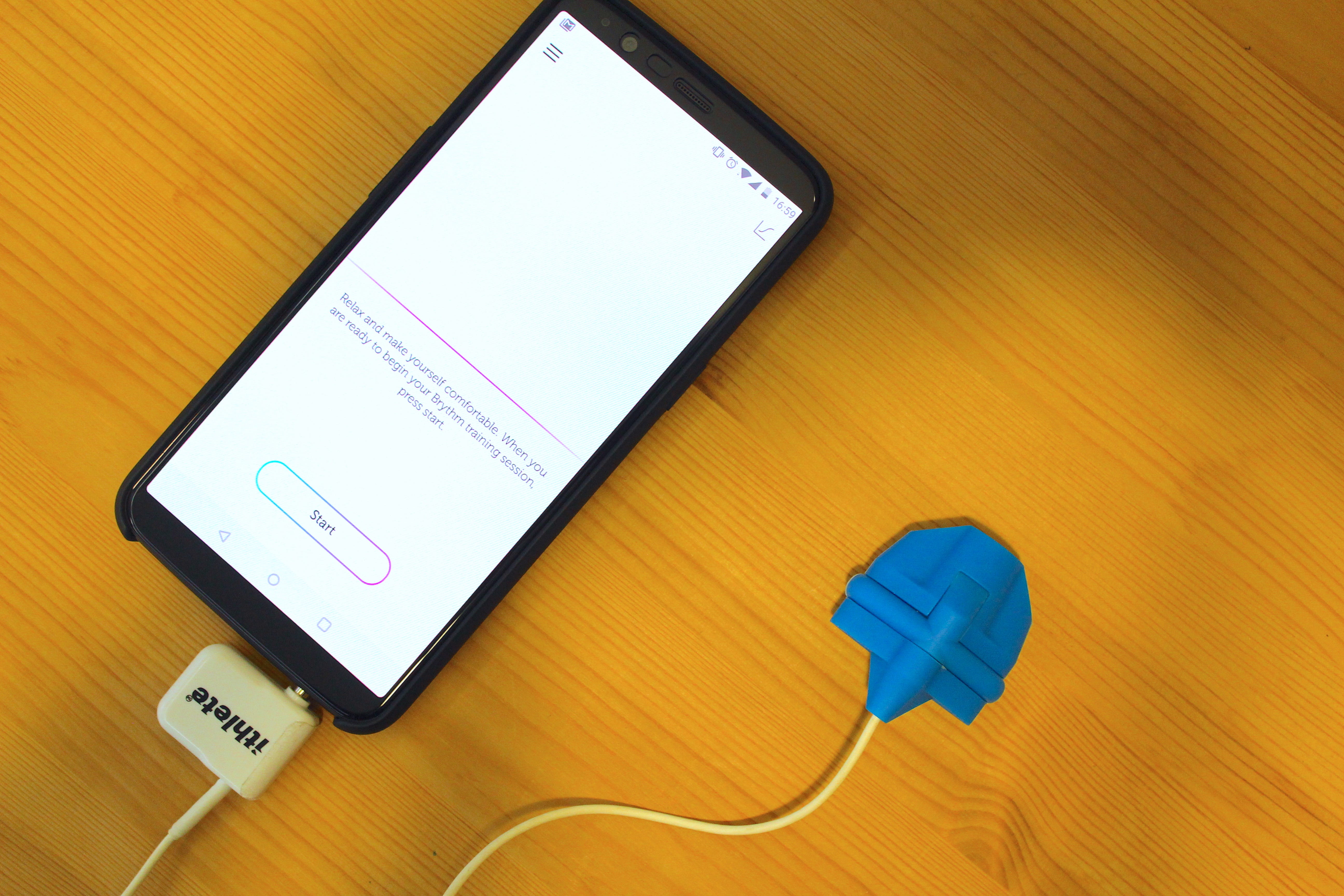Here at Deemaze, we are constantly looking for challenges outside of our comfort zone, and this project is far from what we are accustomed to producing for our clients. While most products have a keystone that defines their solidity as a tool for management or business, Brythm is not intended as a commercial endeavor for either its owners or users, no; it was imagined, designed and built as a means to help attain a more noble goal.

Bournemouth University (BU) is conducting research with pregnant women to test whether practicing 10 minutes of slow breathing each day lowers their blood pressure. The project is lead by Prof. Alison McConnell, and is a partnership with Simon Wegerif from ithlete, which has contributed their finger-based heart rate sensor, and advanced signal processing expertise. Nourish’s Jose Reis and Neil White were in charge of the apps’ management and design, respectively. As for Deemaze, João Monteiro, Paulo Santos, Pedro Batista, Rafaela Ferro and I took care of developing the Android and iOS applications.
Not so long ago, in order to record breathing and heart rate data from study participants on a daily basis, one would need to instruct the participants or staff members on how to collect the data themselves; manage appointments; among other troublesome management and technical logistics. This is not ideal, as it deviates precious effort and time from the actual study. Hence, we were invited to help build Android and iPhone apps so that the participants could independently perform their measurements, with emphasis on ease of use and the absence of intensive prior instructions, avoiding all of these ordeals.
# The app
Now knowing how the data collection is going to be handled, all that was left was deciding on the app’s functionalities and features. We arrived at the following core set:
- Onboarding instructions for correct usage,
- Registering Blood Pressure and Pulse values,
- Performing a 10 minute Breath Training Session,
- Setting daily reminders for recording Blood Pressure values and performing Breath Training exercises.
By this point, some of you might be wondering how we are getting the breathing and heart rates from the participants, since we are targeting standard smartphones (iPhone and Samsung devices, mainly) and none of them have embedded sensors for it. Moreover, some of you might already be familiar with other applications that are also meant to help with regulating breathing rates for meditation or soothing purposes.

Several factors differentiate Brythm from the already existing rhythmic breathing apps.
# The algorithm
Firstly, Brythm’s algorithm actively regulates the breathing rate throughout the session by tracking the user’s heart rate. It interprets the heart rate readings and adjusts the breathing rate and animations accordingly. This algorithm was developed alongside Simon Wegerif.
# External sensor
Secondly, the majority of other breathing applications either use more unreliable methods to determine the user’s heart rate (the most common is positioning the fingertip over the phone’s camera while the LED illuminates it) or they simply display an “ideal” breathing rate that the user should follow.

Brythm innovates on the concept by interfacing with one of ithlete’s sensors, which records the wearer’s heart rate through their fingertip. With it we have complete control over the breathing exercise’s speed and duration, with no variables missing from the equation, so to say.
# Wrapping things up
This summary of 9 eventful months does not, by any means, depict our full journey of building Brythm’s applications. For example, in the beginning of the project, I got to visit Nourish’s offices in Bournemouth for a whole week, while we tinkered with the application’s design and feel, and improved one of the core selling points of the application: the Breath Training animation.
It was a pleasure working with everyone, especially José Reis and Neil White, who both made an outstanding job managing the project from the very start. A big shout out to Neil White, the app surely wouldn’t look as good as it does without your creative mind.
The clinical trials are starting and now it’s a matter of waiting for enough data to be collected and analyzed by Prof. McConnell. We hope to keep you posted in the near future.
Originally published on Medium